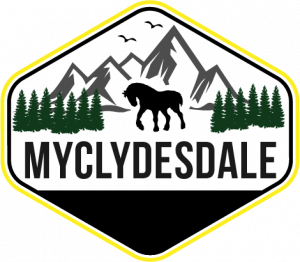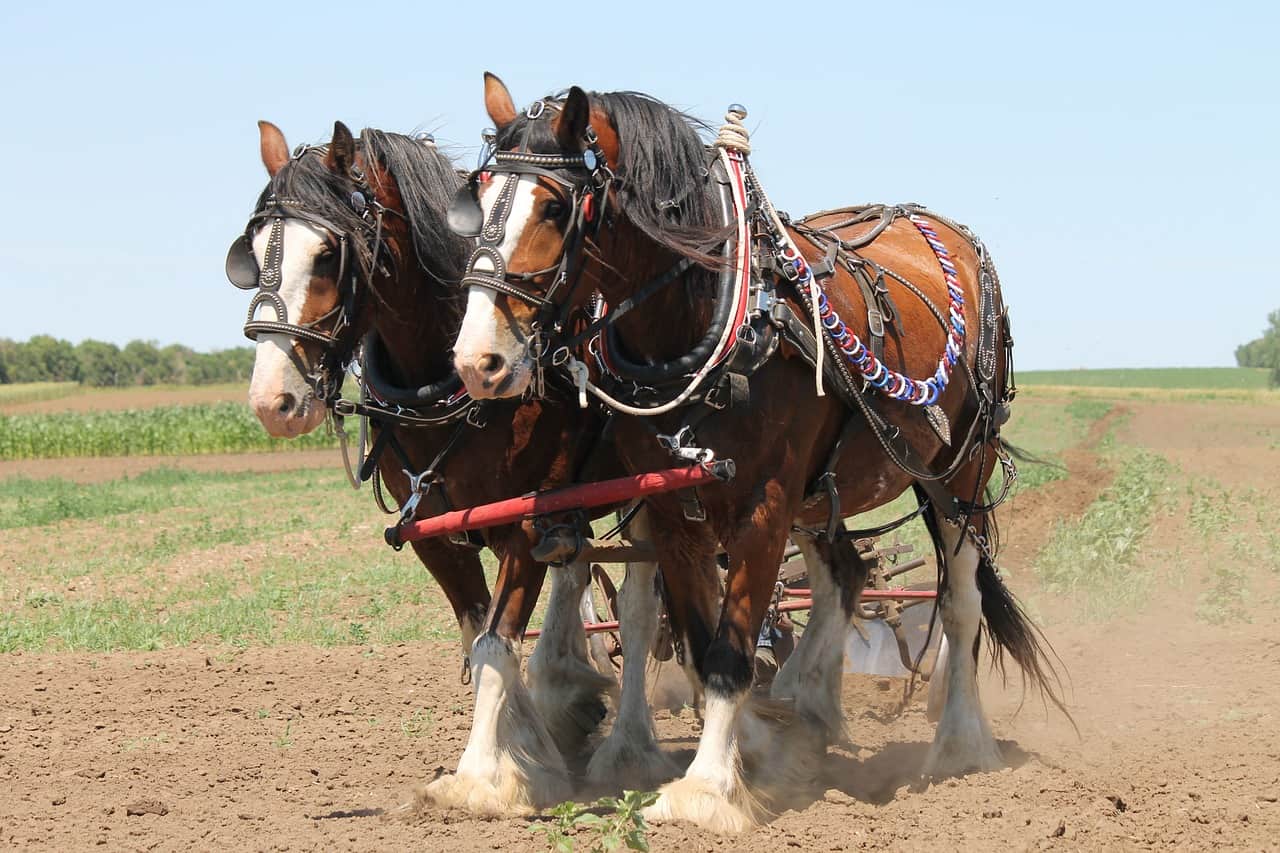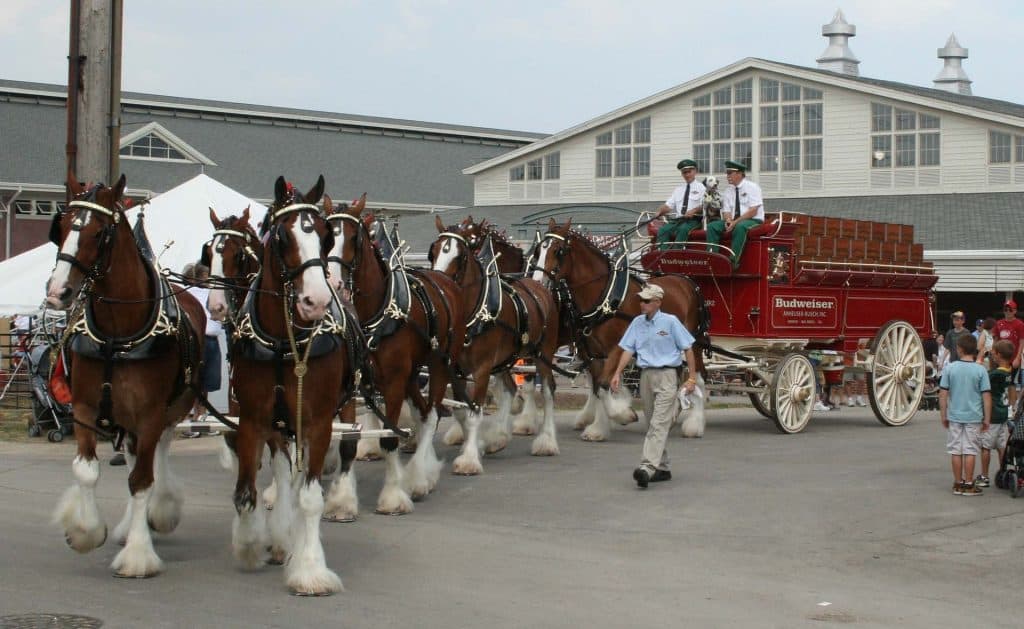If you’ve ever caught sight of a horse-drawn Budweiser parade, you’ve most likely marveled at the majestic seeds. The Clydesdale horse is one of the most popular and well known in heavy horse breeds. They are one of the rare flat-boned, draught horses in the world. The broad stature, signature legs, and high-stepping gait of Clydesdales are easy to see. Yet they are usually very gentle, easy-going, and easy to train, considering their incredible size.
Throughout this article, we will dig deep into the Clydesdale history , origin, background, body appearance, evolution, and special characteristics that you may or may not aware of them.
, origin, background, body appearance, evolution, and special characteristics that you may or may not aware of them.
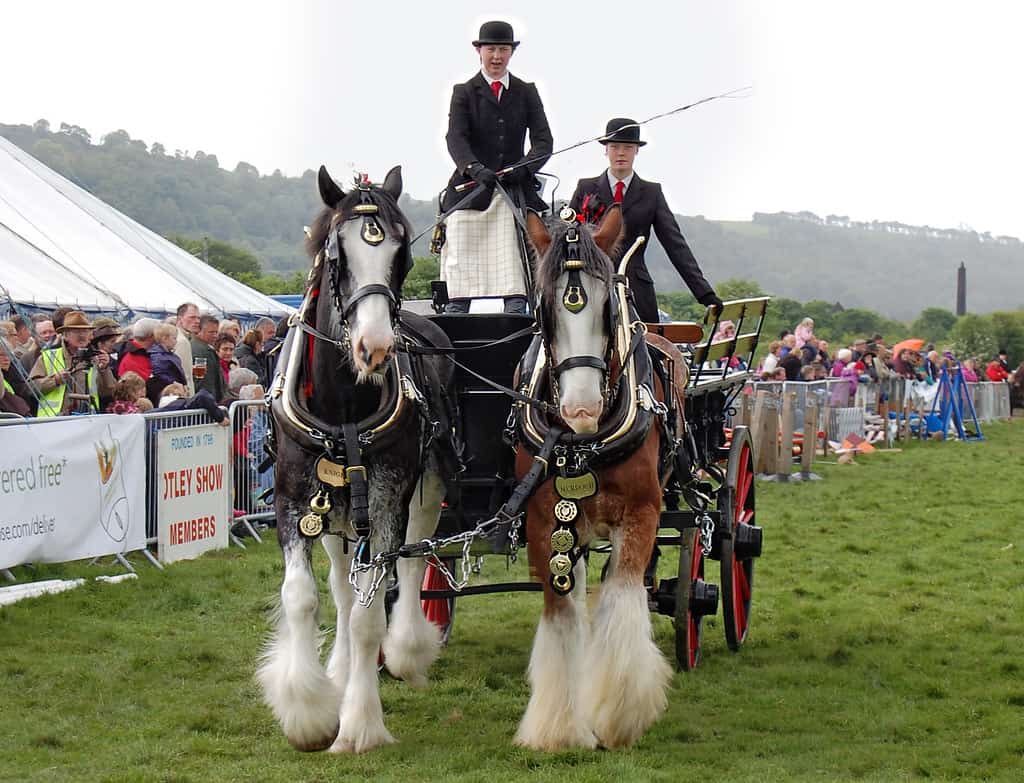
Breed Overview
- Weight: 1,600 to 2,400 pounds
- Height: Approx 6 feet
- Appearance: Long, white feathering on legs; long neck; broad forehead;
- Best For: Riders of all level
- Life Span: 20 to 25 years
Clydesdale History and Origin
Scientific Name– Equus caballus
The Clydesdale is a heavy draft horse breed developed in Scotland during the late 18th and early 19th centuries in what is now called Lanarkshire district. The Clyde River flows through the region and that is how the Clydesdale was given its name. Flemish stallions were imported to Scotland in the mid-18th century and bred to local stallions, which led to foals larger as compared to the existing local stock. These incorporated an unnamed black stallion brought in from by John Paterson of LochyLoch from England and an unknown dark brown stallion possessed by the Duke of Hamilton.
Another well-known stallion was a 165 cm (16.1 h) of unknown pedigree named Blaze. In the early nineteenth century, written pedigrees of these foals were kept. In 1806, a filly, later called “Lampits mare” after her owner’s farm name, was born and which traced her ancestry to the black stallion. This stallion is listed in the heritage of almost every Clydesdale living today. One of her foals was Thompson’s Black Horse (called Glancer), which significantly impacted the Clydesdale breed.

The Scottish climate have harsh winters and some gruelling terrain hence the thick coats, strong and powerful body along with agility. They needed this to live in Scotland’s cold winters from where the horse originates.
At an exhibition in Glasgow in 1826, the first recorded utilize of the name “Clydesdale” for the breed was called out. By widespread crossbreeding with local marshes, these stallions spread the Clydesdale type across the areas where they were raised. By 1840, the Scottish draught horses and the Clydesdale were the same. In 1877, the Clydesdale Horse Society of Scotland was established; the American Clydesdale Association followed it in 1879 and later renamed the Clydesdale Breeders of the USA. In the mid 19th century, significant numbers of Clydesdales were exported from Scotland.
For 20,183 horses, export certificates were issued between 1884 and 1945 and they have been exported to other nations in the British Empire, North and South America, Western Europe, and Russia. Many horses exported from Scotland went to Australia and NZ.
The Commonwealth Clydesdale Horse Society was established in 1918 as a breed association in Australia. Clydesdales were bred in Australia between 1906 and 1936 so widely that other breeds were almost unknown. It was witnessed that by the late 1960s, ‘Excellent Clydesdale horses are bred in Victoria and New Zealand. Over 25, 000 Clydesdale horses were registered in Australia between 1924 and 2008. The esteem of the Clydesdale led to it being known as ‘the breed that created Australia.’
was established in 1918 as a breed association in Australia. Clydesdales were bred in Australia between 1906 and 1936 so widely that other breeds were almost unknown. It was witnessed that by the late 1960s, ‘Excellent Clydesdale horses are bred in Victoria and New Zealand. Over 25, 000 Clydesdale horses were registered in Australia between 1924 and 2008. The esteem of the Clydesdale led to it being known as ‘the breed that created Australia.’
The Clydesdale horse took a huge hit in the early twentieth century with numbers falling, due to the fact that quite a lot were used in the First World War. Another Fact is that the use of agricultural machinery was increasing at a huge rate therefore decreasing demand for these powerful horses in that area. This affected their sales and breed over the century and changing the way they were intended for, all them years ago.
In the 1990ss, the count started to rise. And by 2005, the Rare Breeds Survival Trust had moved the breed to “at-risk” status, which means that there were fewer than 1500 breeding females in the UK. By 2010, it had been turned to “vulnerable”. In 2010, the Clydesdale was tagged as “watch” by the American Livestock Breeds Conservancy, which means that fewer than 2500 horses were annually registered in the USA and there were fewer than 10, 000 all over the glove. In 2010, the worldwide populace was estimated to be 5000, with around 4000 in the Canada and USA, 800 in the UK, and the rest in other nations which include Japan, Germany, South America, and Russia.
Clydesdale Breeding
Clydesdale draught horse has the same reproductive rates as any other horse breed. In general, the breeders choose the desired stallion to breed with the mare. Upon mating, the mares go through a gestation period of about 11 months, even though this varies slightly.
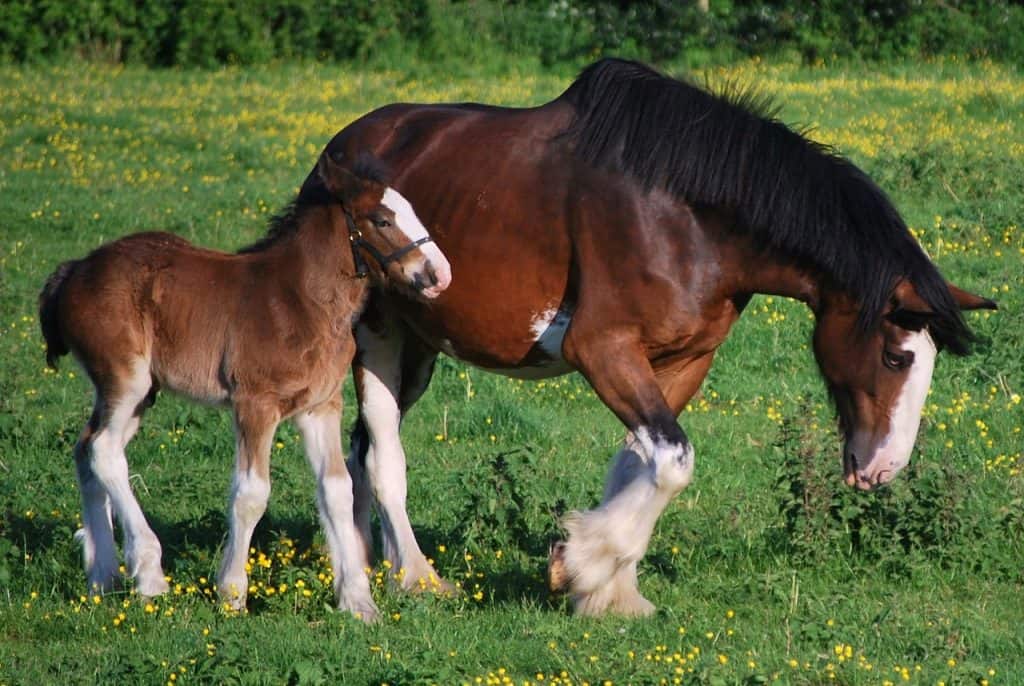
In the vast majority of births, mares give birth to a single child, called a foal. The weaning procedure typically starts when the foal is between 4 and 6 months old. They were developed to work hard as well as long. The formation of a variety of breeds like the Gypsy Vanner horse has been achieved through Clydesdales. They are also crossbred with smaller breeds to form draught horses of medium size.
Characteristics of the Clydesdale
The Clydesdale’s form has evolved considerably in its history. Here are some of the characteristics that Clydesdale entails.
1. Size
The conformation of this horse breed has evolved significantly throughout its history. Well, in the 1920s and 1930s, the horse was a compact smaller as compared to the Belgian, Shire, and Percheron. In the 1940s beginning, breeding animals were chosen to produce taller horses that appeared more alluring in shows and parades. Currently, the Clydesdales stand 162-183 cm high and weigh 820-910 kg. Some mature males are bigger, standing taller than 183 cm and weighing up to 1000 Kg.
2. Colors, Markings & Hair
Clydesdales are usually a reddish-brown color called a bay, though they can also be brown, chestnut or black. Their coats can be solid or have roan markings or spot markings. White stockings are common on the legs, but there are also strong colors. These also have big white bubbles or bald facial marks, which contribute to shiny, dazzling combos.
Bay and black Clydesdales frequently demand a premium, particularly when they are sporting white facial markings and the familiar white stockings. Roans are less common, but there is no such difference between breed associations. Some colors are needed, and the horses with body marks are readily embraced.
One feature common to all Clydesdales is the feathering, the long hair that grows around their ankles. Many Clydesdales have white feathering.
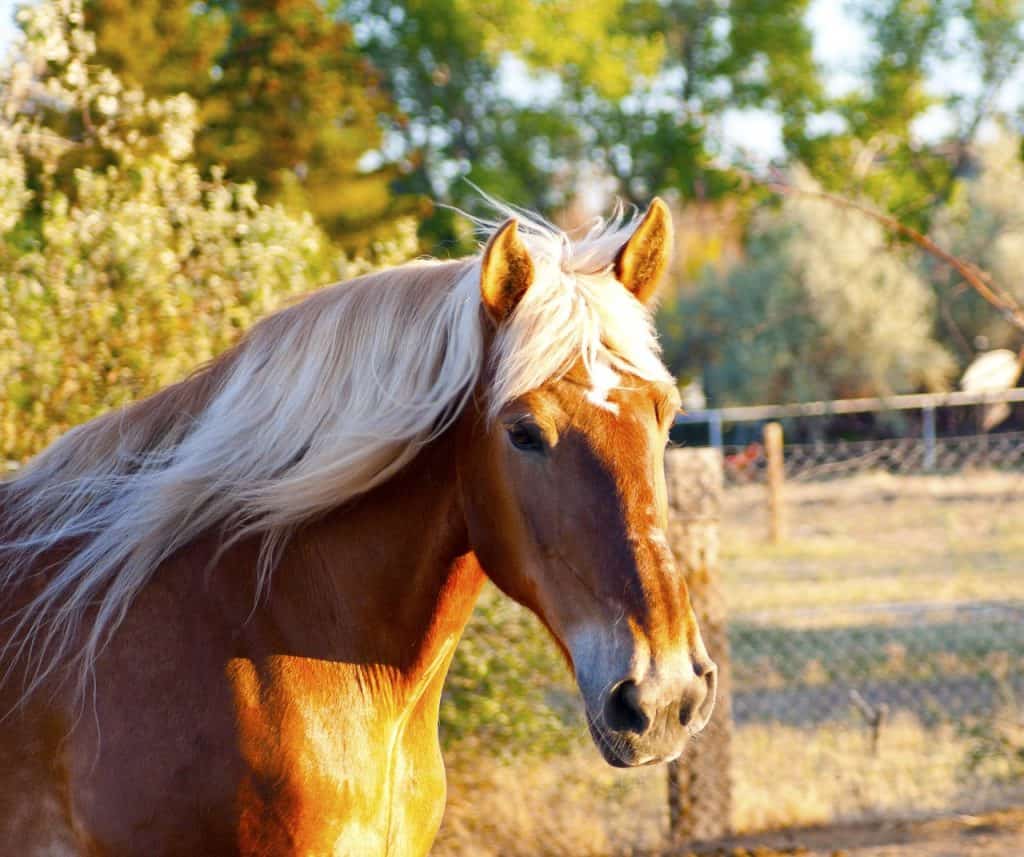
3. Temperament
Large horses need healthy temperaments. Otherwise, their sheer size would make it impossible for them to practice. The typical Clydesdale, mostly known as the gentle giant, displays a courteous, loving disposition. These horses are smart enough to pick up training quickly.
4. Movement
The Clydesdale shows plenty of movement as he runs and is such a common Hitch horse. Each hoof is completely raised off the ground so that a spectator can see the bottom of the hoof as the horses walk. The Clydesdale displays long, straight strides with a heavy joint bending.
Recommended Reading:
Healthy Clydesdale – What to feed your Clydesdale?
What Are Clydesdales Used For?
In the beginning, Clydesdale draught horse was used for forestry, for the transport of coal and heavy transport at Lanarkshire and in Glasgow. Clydesdales continue to be used in forestry, logging, and driving, today. They are displayed, rode, and held for fun. Clydesdales is renowned for its white feathery feet as the traditional race choice for carriage and parade horses.
Clydesdales were also used as show horses along with carriage horses. They are exhibited at the county, state, and national exhibits in lead line and harness classes. The teams that make up the Budweiser Clydesdales ‘ hitches are one of the most famous race leaders. Such horses were initially owned and became the worldwide icon of both the US’s race and company.
‘ hitches are one of the most famous race leaders. Such horses were initially owned and became the worldwide icon of both the US’s race and company.
Clydesdales can be used for riding and even show under the saddle. They have been very quick to train and produce excellent test horses due to their calmness, agility, and energy. The British Cavalry Household uses Clydesdales and Shires as drum horses, leading ceremonial and state parades. Horses are bright, with stumps, skewbalds, and roan. The Clydesdale was also used to build the Australian Draught Horse, among other drawn races. They have also been mixed with Dales Ponies in the early 1900s, making mid-size horses for useful trailers and military artillery.
Champion and Celebrity Clydesdale Horses
Many people have seen the Clydesdale draught horses in ads of Budweiser, or even in person. The horses were part of Anheuser-Busch from the 1930s onwards. After the prohibition, the company was selling the product with a horse-drawn beer wagon. The wagon visited a variety of countries and provided Budweiser cases along the way. Today, many teams are also visiting North America and attending many public events.
What Do Clydesdale Horses Eat?
Like all horses, the Clydesdale horses are herbivores. That means they eat plants and grains. A raised Clydesdale eats 25 to 50 pounds of hay per day and 2 to 10 pounds of grain or feed. It is almost twice as much as horse breeds of average size. Likewise, they need more water than a horse of average size. Based on their age and exercise level, their feeding needs may change to maintain a healthy weight.
Big baby Clydesdale horses also eat a lot. Clydesdale mothers may produce up to 100 pounds of milk a day for their babies to sustain their growing bodies. This rich, nutritious milk will help a Clydesdale baby grow as much as 4 pounds a day.
Handling and Training
Safe handling and riding is a crucial facet of this horse breed. Exercising can play an essential role in your horse management. The horse will exercise on its own, running in a paddock, lunging, walking in reins, or riding. When it was sick or wounded, it might only walk on a lead for some time. If you are handling or giving training to your horse, you should approach your horse at an angle gently. Never reach your horse from the front or the rear.
Grooming
Clydesdales require some extra care for their grooming. It takes more time to groom due to its size. The feathering must also be frequently shampooed on their legs to avoid dirt and waste. It must be thoroughly dried to prevent irritation to the skin. Clydesdales often need inspection and cleaning of their broad hooves regularly, and horseshoes are considerably larger than usual.
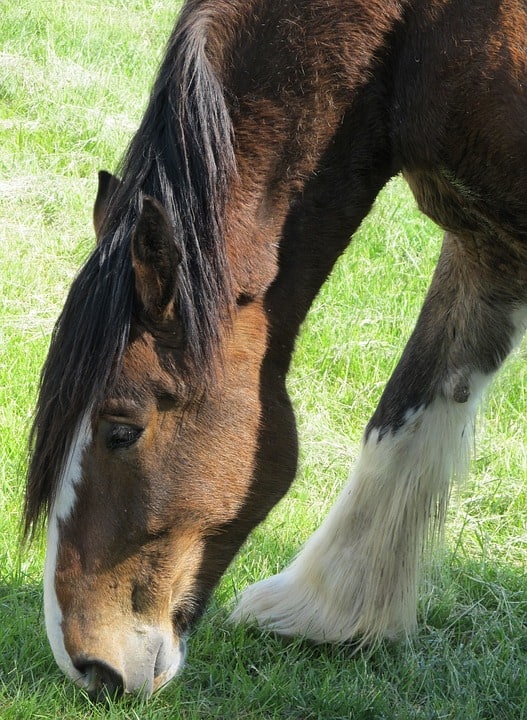
Health Problems
Clydesdales are typically happy, relaxed, and gentle horses. Yet specific health issues are susceptible to them—some chronic experience lymphedema , which swells in their legs. When not properly treated, Clydesdales can also grow skin infections under her thick leg fur.
, which swells in their legs. When not properly treated, Clydesdales can also grow skin infections under her thick leg fur.
Modern Clydesdale
The Clydesdale draught horse is popular as a pleasure horse, playing an ever-increasing role in recreation. Owners of acreage, entrepreneurs, farmers, and light horse enthusiasts are increasingly aware of the difficulty of raising, foaling, improving, and educating the Clydesdale. Like in all breeds of livestock, the Clydesdale has undergone many shifts in focus over the years to satisfy the times’ demands. In the ’20s and ’30s, the market was for a more lightweight horse. Despite the changes in the size and type of horse you desired, Clydesdale ‘s focus on underpinning remained paramount.
Is the Clydesdale Horse Right for You?
Its easy-going disposition only tops Clydesdale’s popularity. Such gentle giants provide powerful family horses for people, even with a little bit of horse riding knowledge. The intellect and relaxed nature make it pretty easy to train and is often referred to as healthy, playful animals. Also, in cold weather, they’re pretty sturdy horses.
Yet because of their size Clydesdales are more challenging to maintain than most other horse breeds. They eat more food, shoeing will cost more than an average horse, and need plenty of space. A 24-by-24-foot stall is commonly considered the minimum size for a regular Clydesdale; for one that takes less frequent trips to the paddock, a greater stall is expected.
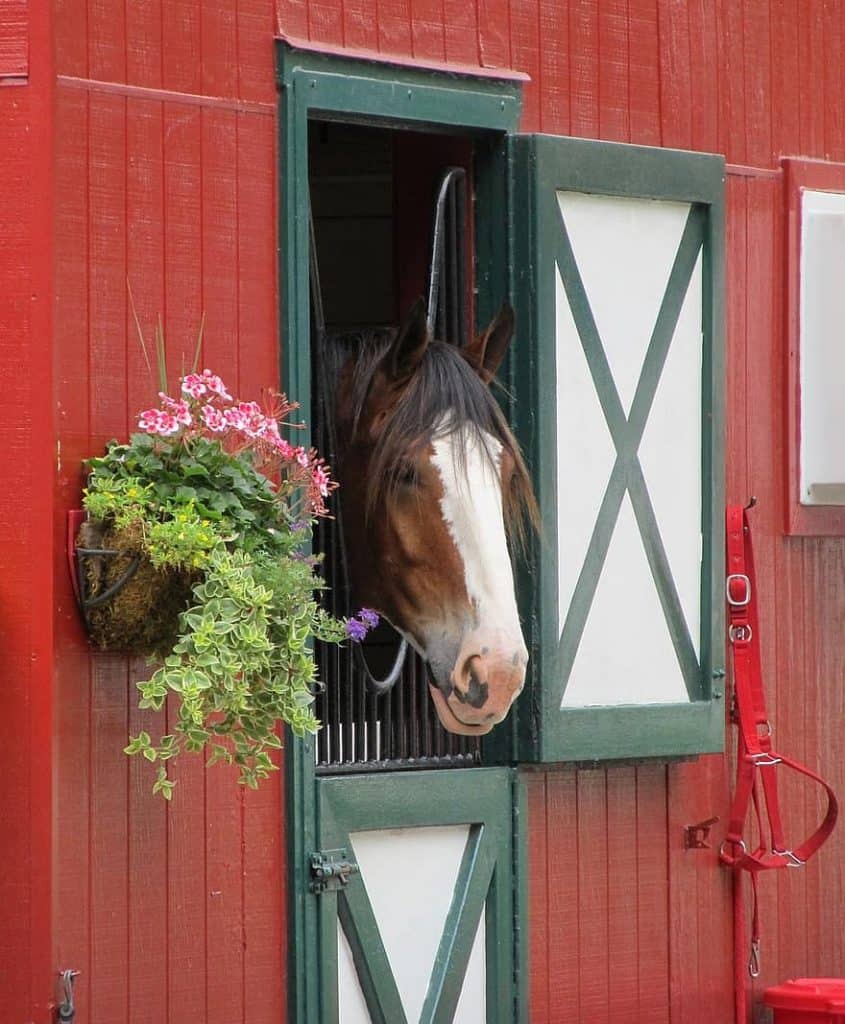
Buying a Clydesdale
The absolute minimum cost for adopting or buying a Clydesdale could be about $1000. The estimated expense ranges from $2,500 to $5,000. Since bay or black Clydesdale horse are highly demanded, they cost even more.
While selecting a reputable horse rescue or breeder, look for an open organization about the horse’s background, medical needs, and temperament. Ask for time with a horse before taking it home; preferably at the stable, you can find out how the organization handles the animals. And keep an eye on any potential issues, including lameness.
Final Words on The Breed
The Clydesdale horse is a precious draft to the horse breeds due to its special behaviour and deposition. If you love horses or you are an academician, the above guide to Clydesdale history will surely help you to know about them a bit deeper.
More Great Posts To Read
Top 15 Fascinating Facts About The Clydesdale Horse
All You Need To Know About The Budweiser Clydesdale Farm
Recent Posts
Mastering English Dressage: Tips and Techniques Complete Guide 101
Introduction English dressage is an equestrian sport that involves precise movements and commands between a dressage horse and its rider. It is a graceful, beautiful art form that requires skill...
Introduction Are you looking to learn more about western dressage, the art of horse dressage? If so, you've come to the right place. In the previous blog we looked at Western vs English Dressage,...
